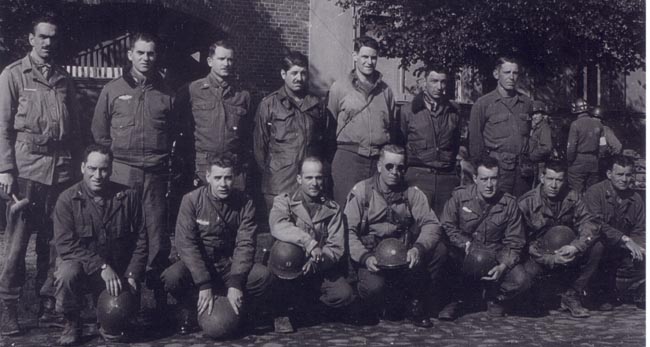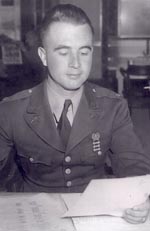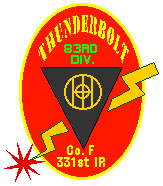

About 1130, 9 July 1944, the attack of the Second Battalion 331st Infantry, was temporarily halted by the sudden appearance of four (4) German tanks in the Battalion sector of advance. Led by these tanks, the German Infantry launched a counter-attack against the Second Battalion behind a heavy artillery and mortar barrage. Lt. Col. FABER realizing the seriousness of the situation, personally led two (2) tanks into position to engage the enemy tanks.
To reach this position, it was necessary for Lt. Col. FABER to expose himself to heavy direct fire from the enemy lines. This he did with utter disregard for his own safety to bring fire on the enemy tanks. His action resulted in one (1) German tank being set afire, the crew being burned to death. Lt. Col FABER continued to direct fire on the enemy position until the lead American tank was hit and it was necessary for the supporting tank to withdraw. Prior to this action, casualties had reduced our companies to only half strength. Two companies had lost their company commanders. "G" Company was pinned down on the left of the Battalion sector, suffering heavy casualties and unable to further their attack, as well as continue the attack of the Second Battalion. Lt. Col. FABER organized "E" and "F" Companies to assault. Again, Lt. Col. FABER went to an exposed position, crawling forward to lead a bazooka team to within seventy-five (75) yards of the German tanks. His aggressiveness resulted in the destruction of another enemy tank and the damage of a third.
Now assured that his battalion would not be assaulting armor, Lt. Col. FABER ordered his men to follow him and led a charge against the enemy position. Through a hail of withering machine gun fire, and under heavy mortar and artillery fire, Lt. Col. FABER personally led his troops toward the objective. Going from point to point in the battalion sector, he encouraged the men to press the attack. The surprise and fury of the assault shocked the enemy into leaving covered and concealed positions. The German counter-attack had been slowed down by the destruction of their armor and now, due to Lt. Col FABER's attack, it was halted and turned into a disorganized rout. As the Germans retreated in disorder, sixty-five (65) were killed by rifle and mortar fire of our own rushing troops.
So furious was the charge, our troops stormed into the town of Sainteny before it could be organized for resistance and the enemy were driven from the town. As soon as the objective had been reached, the town was subjected to heavy shelling from enemy artillery, heavy mortars and direct weapons fire from three (3) sides, for not only had Lt. Col. FABER led his battalion to the Corps objective, but he now occupied a salient into the German lines, with strong enemy forces to the South, East and West. Continuing, without hesitation, to expose himself to the heavy fire falling on the position, Lt. Col. FABER personally organized the defense of the objective. Placing his command group in the center of the area, Lt. Col. FABER occupied a command post in the town itself.
The shelling continued during the night at intervals. At daylight, German artillery began a terrific pounding of the Second Battalion position and tanks on both sides of the town poured in rapid fire from 88mm and 75mm guns.
As relief units were now moving up to relieve his battalion, Lt. Col. FABER ordered his command group to displace to the North of the town. While his troops were moving to their new assembly area, he remained behind to personally supervise the evacuation of the wounded. Responding to a call for help that came from an isolated building, Lt. Col. FABER was killed by a direct hit from a high velocity weapon.
Highly respected and greatly admired by every Officer and Enlisted Man in his battalion, Lt. Col. FABER's every action under fire and in the face of the enemy was courageous and inspirational to his entire command. His deeds of personal bravery and self-sacrifice conspicuously demonstrated that he considered successful completion of his assigned missions more valuable than his own life.

Many thanks to Elizabeth Faber Brusa for supplying this information about her father.
